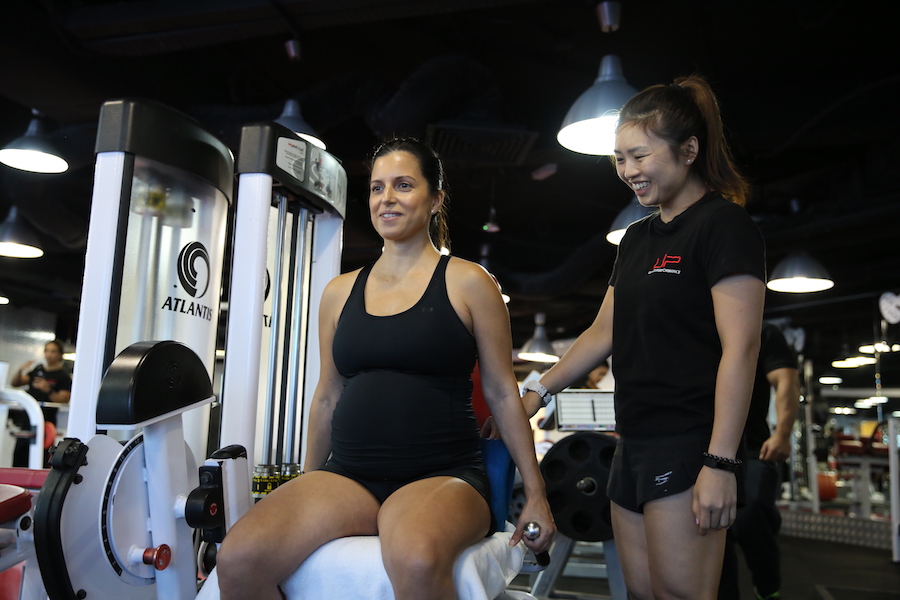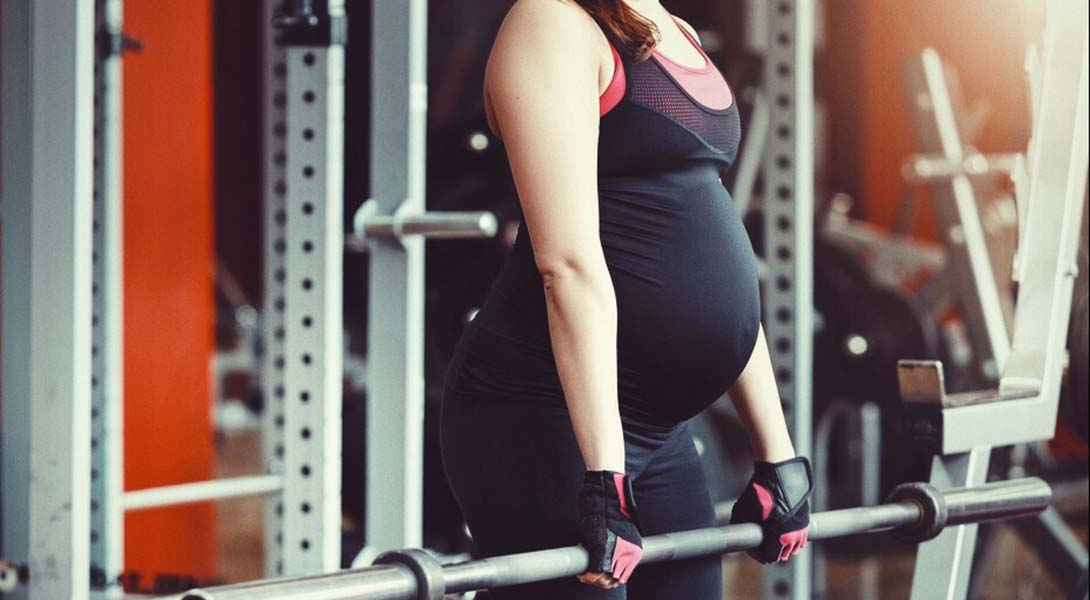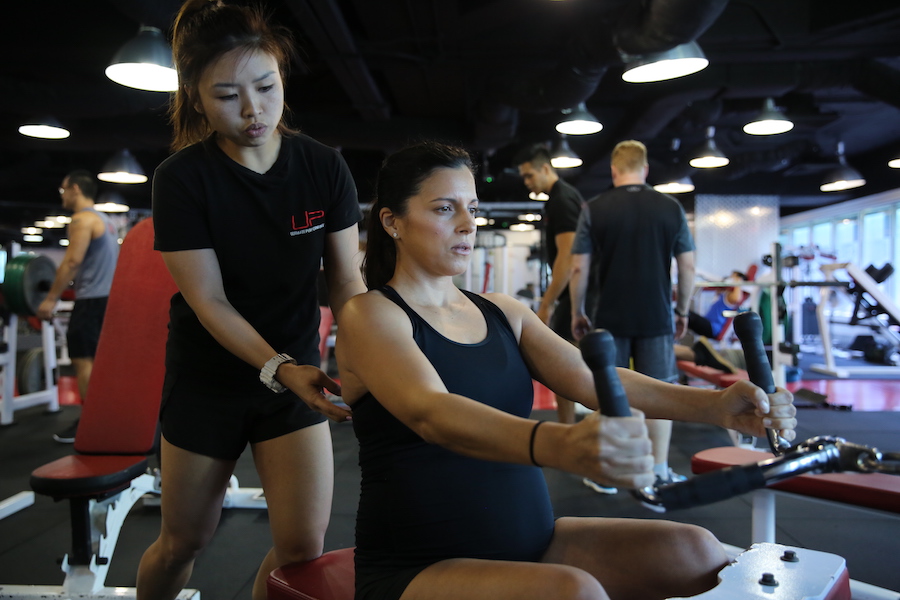Can You Train Safely During Pregnancy?

It is important to exercise during pregnancy in order to maintain good health and fitness for the mother as well as her baby.
Statistics show that 49.6% pregnant women in England have an overweight or obesity problem. Weight gain can be caused by pregnancy, with up to 20% of women carrying over 5kg extra weight a year after delivery.
Exercise can help obese women reduce their risk of preeclampsia and pelvic and lower back pain. It also improves overall health.
If you’re not sure how to exercise safely while pregnant or where to begin, this article will tell you everything you need to learn – from the benefits of exercising to how to adjust your training for each trimester.
What are the benefits of a syringe?
Many women reduce their level of physical activity during pregnancy, which can lead to unwanted weight gain. This is not surprising given all the changes that occur in your body. However, there are many studies which show that exercise can improve your fitness and help you achieve a healthier pregnancy.
Benefits of exercising during pregnancy include:
- Reduced risk of gestational diabetics.
- Post-natal recovery reduced.
- Reduced severity and risk of back pain.
- Reduced risk of incontinence.
- Reduced risk of cesarean births
- Reduced risk for depression and low mood.
- Physical fitness is improved.

Valerie was determined to remain in top shape, as she was expecting the birth of her baby. Learn how working with a U.P. personal trainer helped Valerie achieve her goals. She was able to exercise safely and effectively and remain active throughout her pregnancy.
How can you stay fit during pregnancy?
During pregnancy, it is even more important to tailor your exercise routine to suit your body.
During your nine-month journey, there are many things to consider and adjust with regards to your training.
It is generally safe to continue resistance training during pregnancy. Plus, staying active has many benefits. You should be aware of your feelings and make any necessary adjustments.
- Your doctor has given you the all-clear.
- Contraindications are not applicable to you.
- Follow the instructions.
First Trimester (weeks 1- 12)
You can safely increase your strength and muscle mass in the first trimester. During this stage, you should focus on your upper back, the front of your core, and the posterior chain. You can build strength in your upper body and trunk to support your growing breasts, carry your uterus and its weight, and to offset your center of gravity shifting forward.
Exercises that emphasize pulling movements, such as rows and pulldowns, lower body exercises, such as split squats, seated knee curls, glute bridges, pressing movements, (such as overhead presses or bench press), as well functional training like loaded carries.
This is also a great time to build a solid foundation of cardiovascular fitness. It can increase your capacity to train and reduce the risk of pregnancy-related diabetes, preeclampsia and premature birth. You can choose to do some low-impact exercise like walking or light cardio.

Second Trimester (weeks 14 to 27)
In the second trimester, many of your more unpleasant pregnancy symptoms will begin to fade and you’ll start to feel more energetic. The second trimester makes for a good time to train.
Strength training can reduce pelvic and lower back pain. Some exercises may require adjustments, such as avoiding standing with one leg or doing very wide squats. Use a pillow to support your knees while sleeping or moving in bed. Wear a belt for support and avoid sitting in a slouched posture.
While you might have been able continue to train with the same weights you used in the first trimester of your pregnancy, you may want to reduce the intensity a little as you enter the second. You’re likely to find that your core and pelvic muscles are under more pressure. This means you may not be able push yourself as hard or stabilise as well.
During this time, you may need to adjust your exercise routine. Many barbell exercises are safe to do during the second pregnancy. However, you should avoid explosive movements, such as those found in Olympic lifts, that require the barbell to be moved past the midsection. You can continue to do barbell exercises if you feel stable in your core or pelvic floor. If you feel downward pressure or bulging in your pelvic area, or along the linea Alba (the connective tissue connecting the two sides of the abdominis), reduce the intensity of the exercise or change it up. If you feel doming or excessive downward pressure, you might need to adjust your training.
- Reduce the load.
- Change the reps/sets.
- By changing your breathing.
- Reduce the range of movement.
- Increase your level of stability. If you are doing a split-squat, you should move to a rack so that you can grab one side.
- Change the position of your load. Use a dumbbell at your side, or a trapbar instead of a straight bar when performing deadlifts.
- Avoid excessive intra-abdominal pressurization.
- Try different techniques, e.g. Switch from a barbell to bodyweight hip thrusts, or try a dumbbell with one leg.
- If you are feeling out of breath or need to rest, stop.
Women should avoid lying on their backs during the second half of pregnancy, because the weight of the baby can put pressure on the venacava, which is the main vein carrying blood from the lower part to the heart.
Exercise for short periods of time, e.g. A 30-60 second dumbbell press is probably safer than lying down on your back. If you are not comfortable with the position, you can try adjusting the angle of your bench or using a pad or mat to prop yourself up.

Third Trimester (Week 28 to 40)
You’ll likely notice the biggest changes in your body during your third trimester, particularly around your midsection. You’ll feel less mobile and will have to exert more energy for simple tasks. It’s possible that you are not as energetic for training because your sleep has decreased. You can still be active and continue your training even if you are not able to smash it at the gym.
When you reach the last stages of pregnancy, your main goal should not be to compete with the body but rather to support it. Base your training on the way you feel.
You can keep doing what you were doing if you want to. Resting is also acceptable if you need it. You can choose to stop all training towards the end. You can continue to move, for example, with gentle stretches and mobility drills such as:
- Hip circles
- Hip flexor stretches.
- Cat-cow stretches.
- Thread the needle
- Wide child’s pose
- Swiss ball pelvic tilts, circles and Swiss balls.
- Tailor stretches.
These exercises will help to relieve stiffness and discomfort and move the baby into a more comfortable position for delivery. You might also want to include some birth preparations exercises in the last trimester such as guided breaths.
Rest as much as you can between sets, and throughout the day. Try to avoid standing long periods of time and take frequent breaks.
You may need to tweak/ adjust your training in the third trimester by:
- If you are not comfortable with the supine exercise, adjust or remove it. Even elevating the bench 15-30 degrees will help relieve discomfort.
- Avoid barbell exercises where you have to move the bar across your abdomen.
- Avoid holding your breath when exercising.
- If you feel like the workout is too intense, reduce the weight or number of reps.
- You can switch crunches to palov presss, wood chops or loaded carry variations.
- Avoid exercises that cause your abdomen to bulge out or dome over the linea alba.
- Avoid exercises that put a lot downward pressure on your pelvic floor. It may feel as if you have a heavy feeling in your perineum, or a greater need to urinate. Refer to a pelvic health physical therapist if you are experiencing symptoms of pelvic dysfunction.

Learn how Lola’s trainer helped her overcome her diastasisrecti to lose 15kg.
What about the nutritional choices?
The nutrition you provide during pregnancy can influence your baby’s long-term health. Contrary to popular belief, you do not need to eat twice as much. Your energy requirements may only rise by a few hundreds calories.
To give your baby the best possible start in life, you should focus your diet on foods that are rich in micronutrients like folate, Omega-3 fatty acid and vitamin D. You can also use supplements to fill in any nutritional gaps, but you should consult your doctor first.
Stress management and adequate sleep are essential for reducing cortisol (your stress hormone), which is present in the fetus.
Take-home message
Achieving and maintaining a healthy weight before and during your pregnancy is crucial to the health of you and your child. It is safe to continue training during pregnancy if your doctor or midwife has given you the go-ahead. You may have to adjust your exercises depending on your mood and stage of pregnancy.
Speak to your midwife or doctor if you have concerns about your diet, lifestyle or training during pregnancy. They will know the best advice for your specific circumstances.